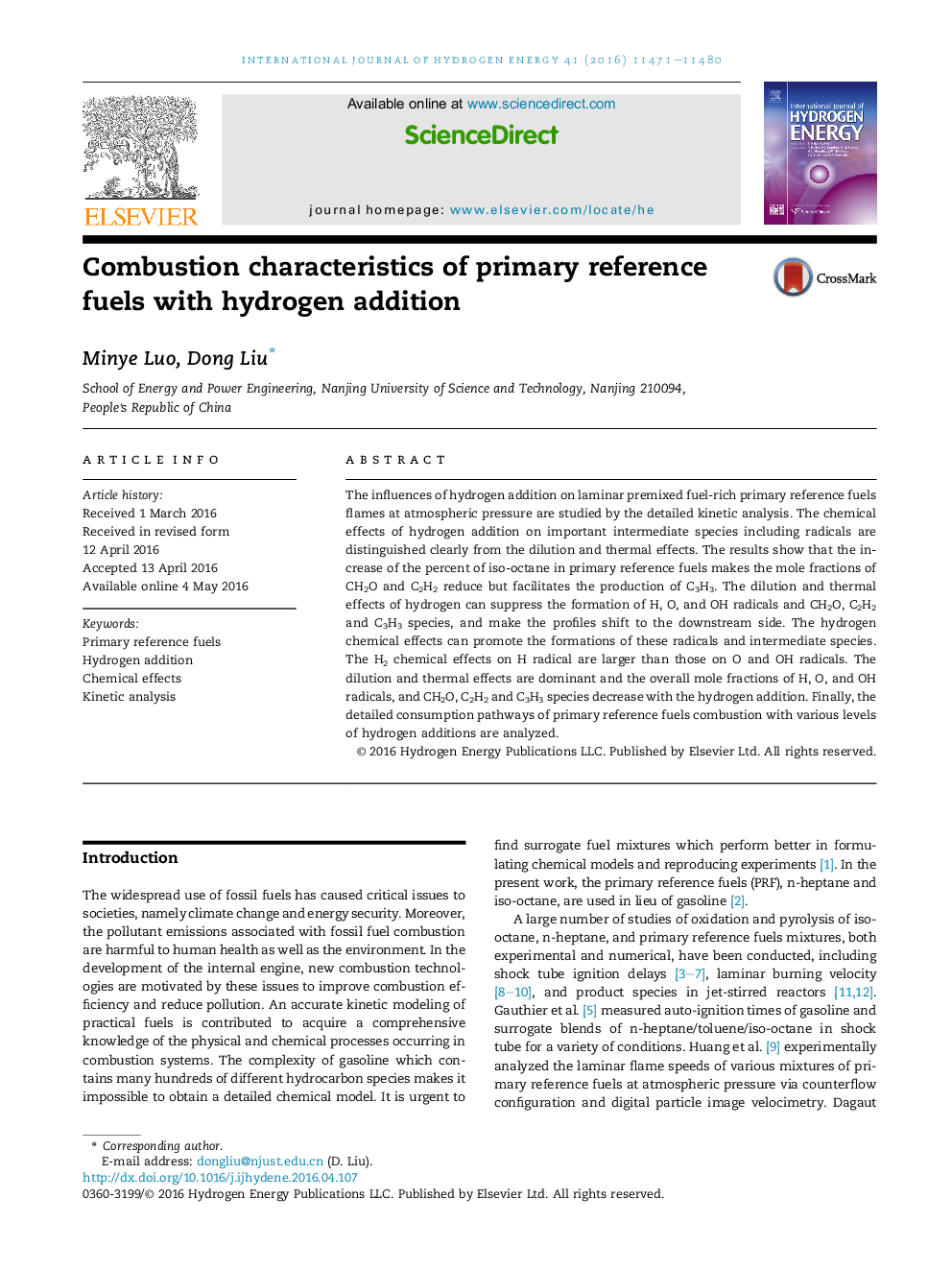| Article ID | Journal | Published Year | Pages | File Type |
|---|---|---|---|---|
| 1269578 | International Journal of Hydrogen Energy | 2016 | 10 Pages |
•Chemical effects of H2 addition on PRF flames are isolated from other effects.•H2 chemical effects promote formations of CH2O, C2H2 and C3H3.•H2 chemical effects on H radical are larger than those on O and OH radicals.•H, O and OH radicals decrease caused by H2 dilution and thermal effects.•The presence of iso-octane in PRF facilitates the production of C3H3.
The influences of hydrogen addition on laminar premixed fuel-rich primary reference fuels flames at atmospheric pressure are studied by the detailed kinetic analysis. The chemical effects of hydrogen addition on important intermediate species including radicals are distinguished clearly from the dilution and thermal effects. The results show that the increase of the percent of iso-octane in primary reference fuels makes the mole fractions of CH2O and C2H2 reduce but facilitates the production of C3H3. The dilution and thermal effects of hydrogen can suppress the formation of H, O, and OH radicals and CH2O, C2H2 and C3H3 species, and make the profiles shift to the downstream side. The hydrogen chemical effects can promote the formations of these radicals and intermediate species. The H2 chemical effects on H radical are larger than those on O and OH radicals. The dilution and thermal effects are dominant and the overall mole fractions of H, O, and OH radicals, and CH2O, C2H2 and C3H3 species decrease with the hydrogen addition. Finally, the detailed consumption pathways of primary reference fuels combustion with various levels of hydrogen additions are analyzed.
